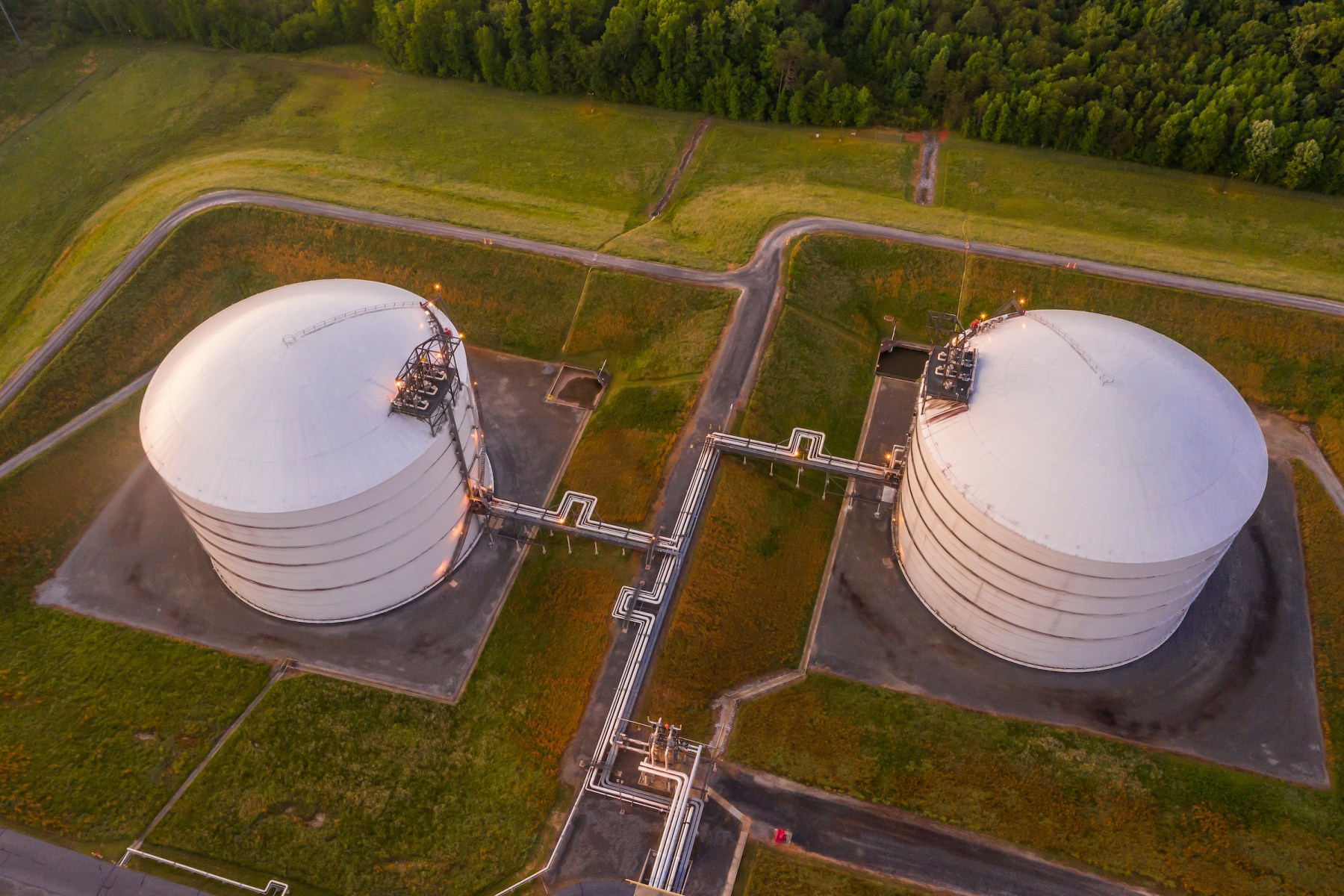Nestled on 829 acres in the hills of rural Stokesdale, North Carolina, the Williams-operated Pine Needle liquefied natural gas (LNG) storage facility is one of the largest of its kind, providing additional reliability to energy infrastructure in the southeast region. It has been reliably serving Transco customers for more than 22 years.
Pine Needle liquefies gas from the pipeline, stores the LNG and later returns it to the system during peak demand periods through a process called vaporization. The facility primarily consists of two 162-foot-tall storage tanks, each with a capacity of about two billion cubic feet — enough natural gas to meet the daily needs of approximately 20 million homes. Pine Needle is capable of liquefying up to 26 million cubic feet of natural gas per day and when demand is high, it can vaporize up to 400 million cubic feet per day.
Joey Page, Senior Operations Manager and 22-year Williams employee, explains how the facility serves Transco, “Think of the system as a T with the horizontal line in the T being Transco and the vertical line Pine Needle, our facility is pulling straight from it.” And he shared, “Our operations team keeps the plant prepared to provide peak demand gas to the Transco System at a moment’s notice.”
The Transco network, which feeds Pine Needle for storage and distribution, was once a south-to-north flow system. Recent enhancements were made to Transco facilities by adding reverse flow capabilities. The upgraded system now allows for moving gas bi-directionally, meaning gas can flow north to south and south to north. The bi-directional system not only provides more reliability, flexibility and operates more efficiently, it also allows Transco to better meet market demands along the eastern seaboard.
With Pine Needle’s storage capabilities, it serves the region during the coldest and hottest days of the year continuing to meet the growing demand for clean energy.
Sources
